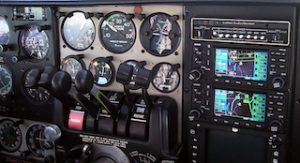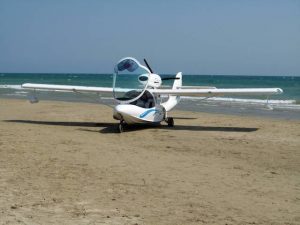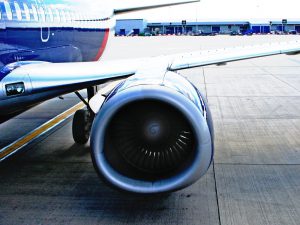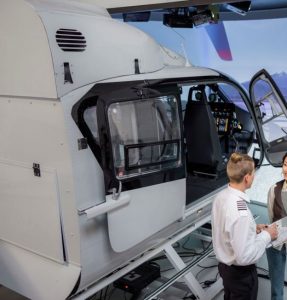Jet Orientation Course (JOC) For Pilots
 The aviation industry demands a high level of skill and knowledge from its pilots, particularly those who operate jet aircraft. The Jet Orientation Course (JOC) is a crucial training program designed to bridge the gap between initial flight training and the operation of complex jet airliners. This course equips pilots with the necessary skills to transition from smaller, propeller-driven aircraft to jet-powered planes, ensuring they are prepared for the challenges and demands of modern aviation. In this article, we will explore the Jet Orientation Course in detail, discussing its importance, the topics it covers, and its role in a pilot’s career progression.
The aviation industry demands a high level of skill and knowledge from its pilots, particularly those who operate jet aircraft. The Jet Orientation Course (JOC) is a crucial training program designed to bridge the gap between initial flight training and the operation of complex jet airliners. This course equips pilots with the necessary skills to transition from smaller, propeller-driven aircraft to jet-powered planes, ensuring they are prepared for the challenges and demands of modern aviation. In this article, we will explore the Jet Orientation Course in detail, discussing its importance, the topics it covers, and its role in a pilot’s career progression.
Importance of Jet Orientation course
The Jet Orientation course is essential for several reasons:
- Transition to jet aircraft: Pilots transitioning from propeller-driven aircraft to jets must adapt to significant differences in performance, handling, and systems. The JOC provides the foundational knowledge and skills required for this transition.
- Safety and proficiency: Operating a jet aircraft safely requires a thorough understanding of its systems, performance characteristics, and operational procedures. The JOC ensures pilots are proficient in these areas, enhancing overall flight safety.
- Preparation for airline training: Many airlines require pilots to complete a JOC before commencing type rating training on specific jet aircraft. The course prepares pilots for the rigorous training and assessments they will face in airline training programs.
Topics covered in the Jet Orientation course
The JOC curriculum is comprehensive, covering a range of topics essential for the safe and efficient operation of jet aircraft. These topics include:
1) Jet aircraft systems
Understanding the systems of a jet aircraft is fundamental to operating it safely. The JOC covers the following systems in detail:
-
- Engines: The course provides an in-depth understanding of jet engines, including their operation, performance characteristics, and associated systems such as fuel and oil.
- Electrical systems: Pilots learn about the aircraft’s electrical systems, including power generation, distribution, and management.
- Hydraulic systems: The hydraulic systems that control various aircraft functions, such as landing gear, brakes, and flight controls, are thoroughly covered.
- Avionics: Modern jets are equipped with advanced avionics systems. The JOC familiarizes pilots with these systems, including navigation, communication, and flight management systems.
- Environmental control systems: Pilots learn about the systems that manage cabin pressure, temperature, and ventilation, ensuring passenger comfort and safety.
2) Aerodynamics of jet aircraft
Jet aircraft have different aerodynamic characteristics compared to propeller-driven planes. The JOC covers:
-
- High-speed aerodynamics: Pilots learn about the aerodynamic principles that govern high-speed flight, including the effects of Mach number and compressibility.
- Jet handling characteristics: The course addresses the handling differences between jets and propeller aircraft, including considerations for takeoff, climb, cruise, descent, and landing.
- Stall and spin recovery: Pilots are trained in recognising and recovering from stalls and spins, which can occur under certain flight conditions.
3) Performance and flight planning
Efficient flight planning and performance management are critical in jet operations. The JOC includes:
-
- Performance calculations: Pilots learn to calculate takeoff and landing distances, climb performance, and cruise performance based on aircraft weight, weather conditions, and runway characteristics.
- Fuel planning: Accurate fuel planning is essential for jet operations. The course covers techniques for calculating fuel requirements, considering factors such as flight duration, alternate airports, and contingencies.
- Flight planning tools: Pilots are introduced to advanced flight planning tools and software that assist in optimising flight routes and fuel consumption.
4) Jet aircraft operation procedures
Standard operating procedures (SOPs) are vital for safe and efficient jet operations. The JOC emphasises:
-
- Cockpit procedures: Pilots learn the SOPs for pre-flight, in-flight, and post-flight operations, ensuring consistency and safety in cockpit management.
- Crew resource management (CRM): Effective communication and teamwork are essential in multi-crew environments. The course covers CRM principles, teaching pilots to work collaboratively and manage cockpit resources effectively.
- Emergency procedures: Pilots are trained to handle various emergency situations, including engine failures, hydraulic failures, and electrical malfunctions, using established procedures.
5) Human factors and decision-making
Human factors play a significant role in aviation safety. The JOC addresses:
-
- Situational awareness: Pilots learn techniques for maintaining situational awareness, which is crucial for safe decision-making and risk management.
- Stress and fatigue management: The course covers strategies for managing stress and fatigue, which can affect pilot performance and decision-making.
- Decision-making models: Pilots are introduced to structured decision-making models, such as the OODA loop (Observe, Orient, Decide, Act) and the DECIDE model (Detect, Estimate, Choose, Identify, Do, Evaluate).
6) Flight simulation training
Flight simulators are an integral part of the JOC, providing pilots with realistic training scenarios without the risks associated with actual flight. Simulation training includes:
-
- Simulated flight scenarios: Pilots practice various flight scenarios, including normal operations, abnormal situations, and emergency procedures, in a controlled environment.
- Handling abnormal situations: The course provides pilots with the opportunity to handle abnormal situations and system failures, enhancing their problem-solving skills and confidence.
- CRM and communication: Simulators are used to practice CRM and communication skills, helping pilots develop effective teamwork and coordination.
Role of Jet Orientation Course in a pilot’s career
Completing the JOC is a significant milestone in a pilot’s career, offering several benefits:
- Career advancement: The JOC is often a prerequisite for airline employment and type rating training. Completing the course enhances a pilot’s qualifications and career prospects.
- Skill development: The JOC provides pilots with advanced skills and knowledge that are essential for operating jet aircraft safely and efficiently.
- Confidence and competence: By the end of the course, pilots gain confidence in their ability to handle jet aircraft, making them better prepared for real-world operations.
- Regulatory compliance: The JOC ensures that pilots meet regulatory requirements for training and proficiency, which are essential for maintaining their licenses and certifications.
Transition to jet operations
The Jet Orientation Course (JOC) is a crucial step in the training and development of pilots aspiring to operate jet aircraft. The comprehensive curriculum covers essential topics such as aircraft systems, aerodynamics, performance and flight planning, operational procedures, human factors, and flight simulation training. By providing pilots with the necessary knowledge and skills, the JOC ensures they are well-prepared to transition to jet operations, enhancing their safety, proficiency, and career prospects. As the aviation industry continues to evolve, the importance of advanced training programs like the JOC will only grow, making it an invaluable asset for pilots and airlines alike.










